Irrometer Components
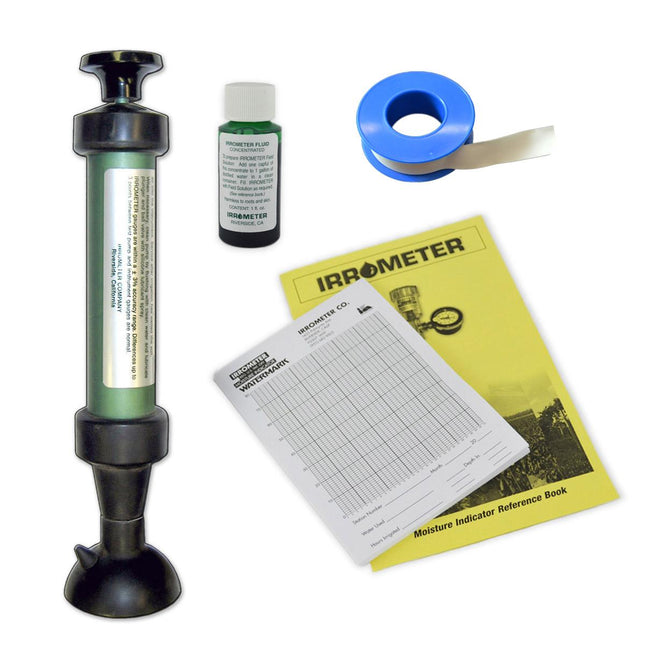
Irrometer Pump Service Kit
Service Units are designed to aid users in the placement and installation, interpretation of readings, and maintenance of IRROMETER soil moisture indicators. Several helpful items are included in the kit. The primary component of a Service Unit is a small hand vacuum pump. The pump is designed to seal on the reservoir portion of the instrument body and is used to create a vacuum manually, evacuating any air contained in the tensiometer. These instruments function with the greatest accuracy when all air has been removed. One Service Unit will service multiple instruments. The Pump Service Unit is different in that it includes a pump with an integral vacuum gauge that registers in centibars (cb) or kilopascals (kPa). This is used to validate accuracy of the gauge on the IRROMETER being serviced. Click here for Irrometer's instruction manual.
$115.00
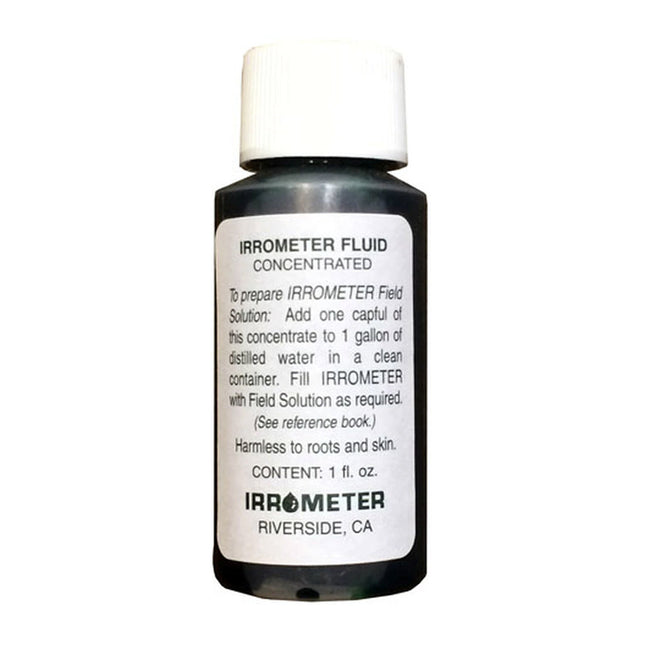
Irrometer Tensiometer Fluid (1 oz.)
1 oz. bottle of concentrated dye for coloring water. To prepare IRROMETER Field Solution: Add a capful of this concentrate to 1 gallon of distilled water in a clean container. Fill IRROMETER with Field Solution as recommended (See Reference Book) Harmless to roots and skin
$6.25
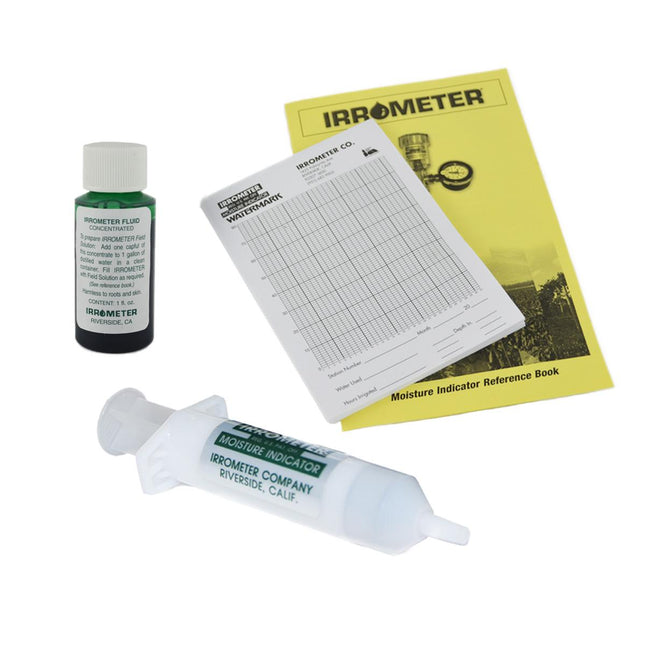
Irrometer Miniature Low Tension (MLT) Service Unit
The IRROMETER Model MLT (Miniature Low Tension) was designed for use in small containers commonly used in greenhouses and nurseries. Its compact design and short insertion depth of 4.75 inches (12 cm) allows the MLT to be installed in smaller growing vessels. With a range of 0-40 centibars (cb) or kilopascals (kPa), this instrument is for use in situations where tensions above 30 cb (kPa) are rarely expected. Gauge increments of 1 cb (kPa) provide a benefit where finer resolution near saturation is needed. This model instrument is also well suited for conditions where rapidly changing soil moisture conditions need to be observed. The "Quick-Flo" ceramic tip is colored blue for easy identification. MLT Service Unit includes syringe style Vacuum Pump, one bottle of IRROMETER Fluid, 25 Monthly Chart Forms, and a Reference Book. Click here for Irrometer's instruction manual.
$27.27
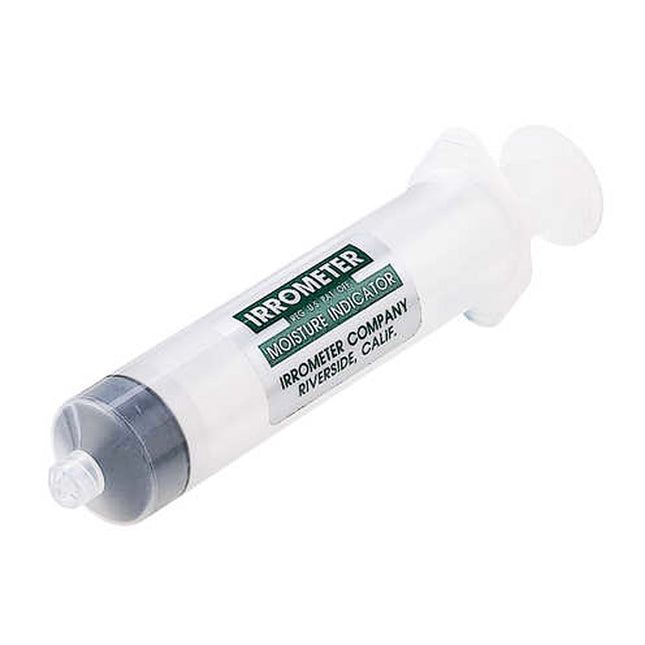
Irrometer Disposable Soil Sampling Syringe
The syringe is used for extraction of the collected sample. Connect the plastic extraction syringe to the tubing by twisting it onto the end fitting and draw up on the syringe plunger to extract the soil solution for analysis. *Between samples, it is important to rinse the syringe with distilled water to prevent carry-over contamination from sample to sample. For Installation and Operation Instructions click here.
$7.94
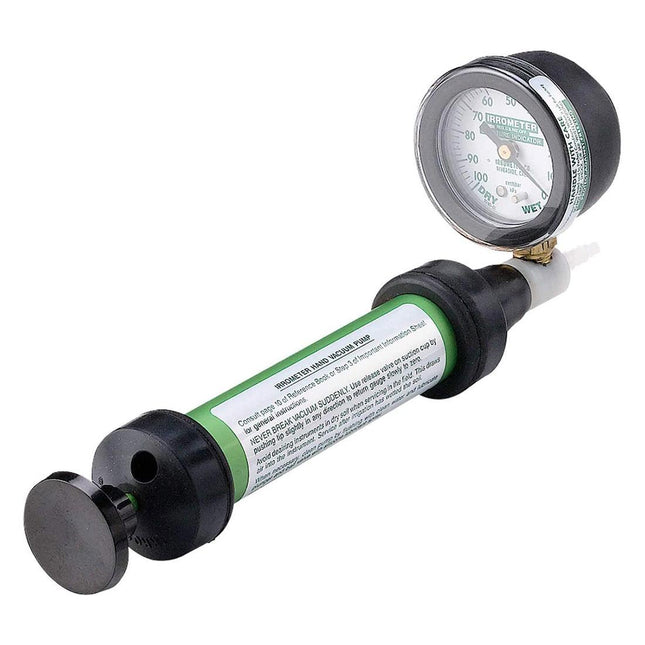
Irrometer Soil Solution Access Tube (SSAT) Vacuum Pump
A hand vacuum pump with gauge and tubing adapter is used for applying vacuum to the tube for sample collection. We recommend using the Vacuum Pump on tubes longer than 12 in. (30 cm) to apply proper vacuum. The extracted soil water samples are commonly tested with electronic meters or portable test kits. This useful in-field sampling technique is quick and easy to perform, which makes it well suited to the frequent fertigation schedules common with certain growing conditions.
$115.67
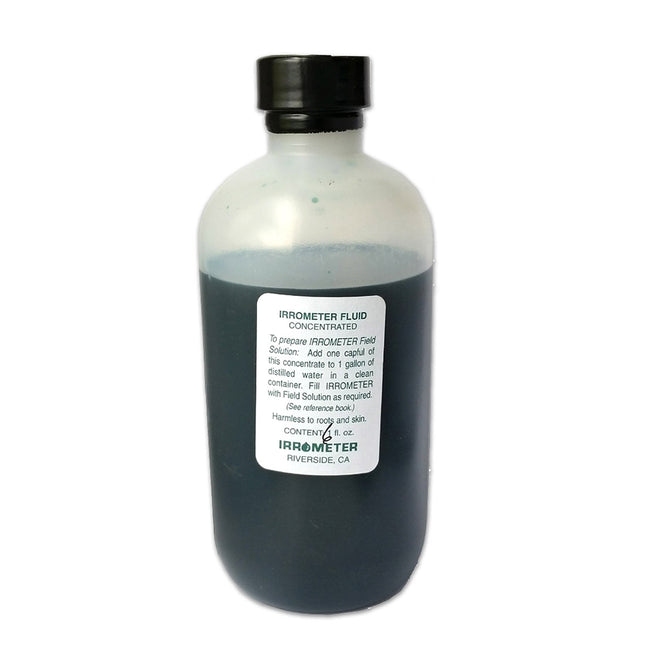
Irrometer Tensiometer Fluid (6 oz.)
1 oz. bottle of concentrated dye for coloring water. To prepare IRROMETER Field Solution: Add a capful of this concentrate to 1 gallon of distilled water in a clean container. Fill IRROMETER with Field Solution as recommended (See Reference Book) Harmless to roots and skin
$23.54
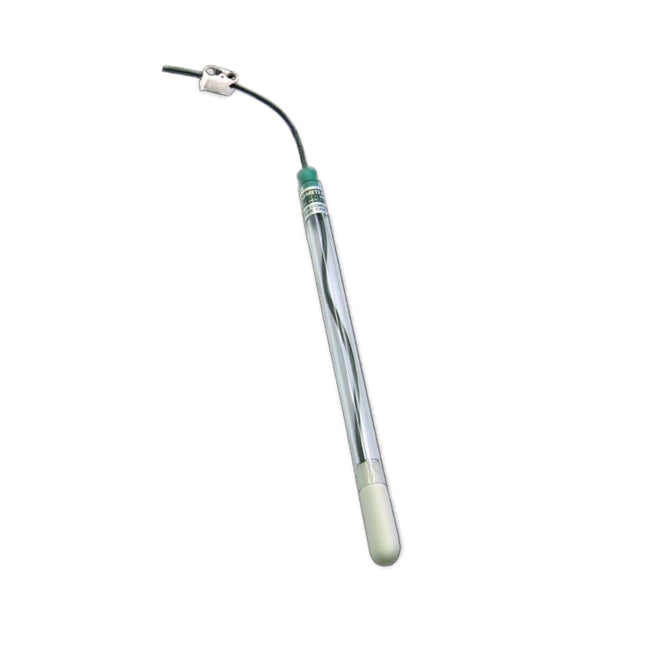
Irrometer 12" Soil Solution Access Tube (SSAT) SR
SSAT (Soil Solution Access Tubes), or Suction Lysimeters, were developed to easily extract soil water samples for testing. They provide the user with an accurate method of determining salinity or plant nutrient levels. Because the sample is collected at root zone depth, it reflects the true impact fertilization has on the plant material. Understanding soil water conditions helps the user make informed fertigation scheduling decisions resulting in improved yield and reduced fertilizer, water, labor and energy costs. Features: Easy to install and use Standard ceramic tip (white) for most soil types Optional Double Suction line for longer tubes Collects soil water sample at the root zone Crop consultants, irrigation professionals and researchers find the SSAT particularly useful because of its ability to easily gather soil water samples for testing. Commercial growers see the value of soil water sampling at the root zone because it reflects the net "effect" that fertilization has as it interacts with previously applied nutrients in the soil. Scientists also use this equipment when identifying and researching environmental contaminants and their movement in soil. Click here for Irrometer's instruction manual.
$45.36
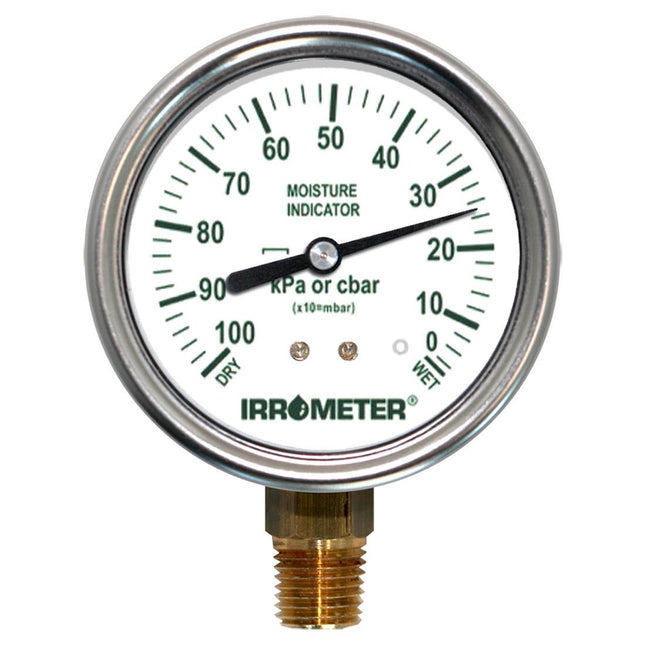
Irrometer Standard (SR) Model Vacuum Gauge
The IRROMETER was first developed in 1951 to help growers improve irrigation efficiency. It provides the user with accurate information on soil moisture status regardless of soil type. The instrument measures in centibars (cb) or kilopascals (kPa) of soil water tension. This value represents the energy a plant's root system uses to draw water from the soil. Understanding soil moisture activity helps the user make informed irrigation scheduling decisions resulting in improved yield and quality while reducing water, fertilizer, labor and energy costs. Specifications: DIAL SIZE: 2.5 in. (63 mm) CASE: AISI 304 Stainless steel membrane vented case with IP 67 protection degree WINDOW: Polycarbonate with EPDM gasket seal, DIAL: Scale of 0-100 cb (kPa), white with contrasting green markings. ACCURACY: +3-2-3% of span ASME B40.1 Grade B MECHANISM: Bronze Bourdon Tube with brass and stainless steel internals CONNECTION: Standard 1/4 in. NPT- Brass Bottom Mount OPERATING TEMPERATURE: -40° to 150° F (-40° to 65° C), 32° to 150° F (0° to 65° C ) for water service
$32.89
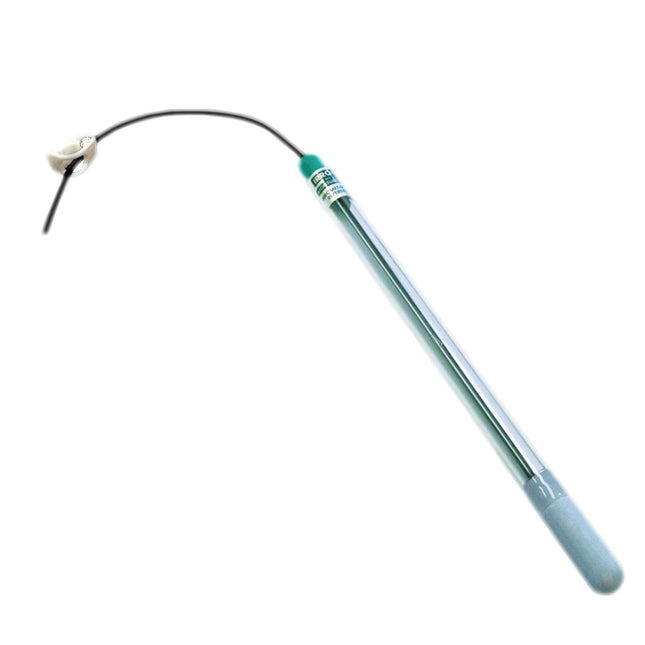
Irrometer 12" Low Tension (LT) Soil Solution Access Tube (SSAT)
SSAT (Soil Solution Access Tubes), or Suction Lysimeters, were developed to easily extract soil water samples for testing. They provide the user with an accurate method of determining salinity or plant nutrient levels. Because the sample is collected at root zone depth, it reflects the true impact fertilization has on the plant material. Understanding soil water conditions helps the user make informed fertigation scheduling decisions resulting in improved yield and reduced fertilizer, water, labor and energy costs. Features: Easy to install and use Low Tension tip (blue) for sandy soils and growing media Optional Double Suction line for longer tubes Collects soil water sample at the root zone Crop consultants, irrigation professionals and researchers find the SSAT particularly useful because of its ability to easily gather soil water samples for testing. Commercial growers see the value of soil water sampling at the root zone because it reflects the net "effect" that fertilization has as it interacts with previously applied nutrients in the soil. Scientists also use this equipment when identifying and researching environmental contaminants and their movement in soil. For more information see Irrometer's spec sheet and instructions.
$48.77
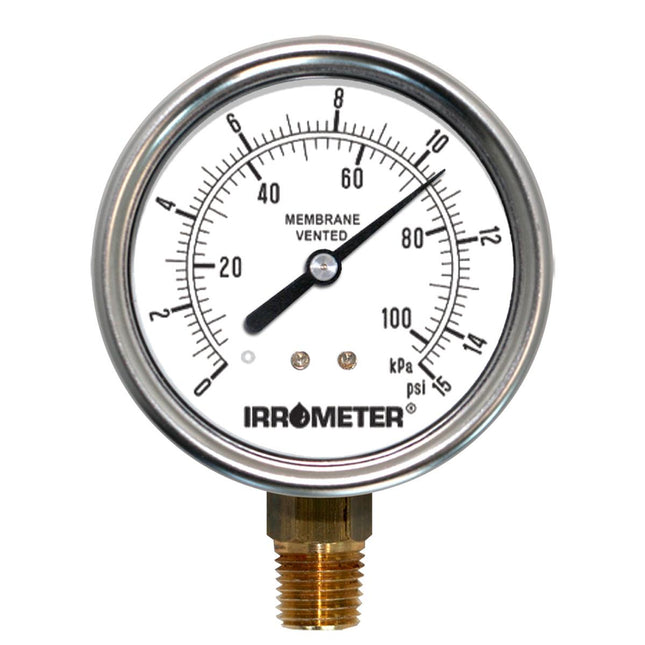
Irrometer Pressure Gauge 15 psi
This membrane vented pressure gauge allows for superior temperature and elevation related compensation while maintaining a dust proof and waterproof environment.
$36.87
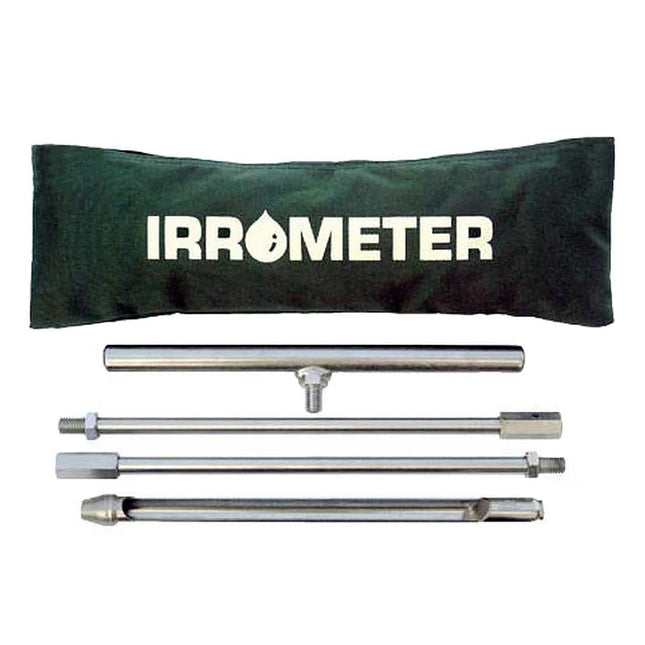
Irrometer Coring Tool Kit
Assemble the coring tip onto the extension sections and the handle by screwing pieces together. Use as many extensions as necessary to make the tool the appropriate depth to position the sensor. Push the coring tool into the soil at the desired sensor location no more than one foot (30 cm) at a time to get to the desired depth. After each insertion of the tool, pull it back out and remove the soil core that has accumulated in the tip. Never rotate the tool counter-clockwise while it is inserted in the ground as the pieces can become unscrewed. Often it can be easier to push on the handle with your waist or knee to improve leverage. Footjacks and "backsaver" handles are available as options that can make installation easier. Once the hole has been made to the desired depth, the sensor can be inserted. Be sure the sensor is firmly seated in the bottom of the hole and backfilled making sure the fill soil is compacted similarly to the surrounding area, as a false reading could be obtained if surface water wicks down through uncompacted soil. Instruction Manual
$277.55













